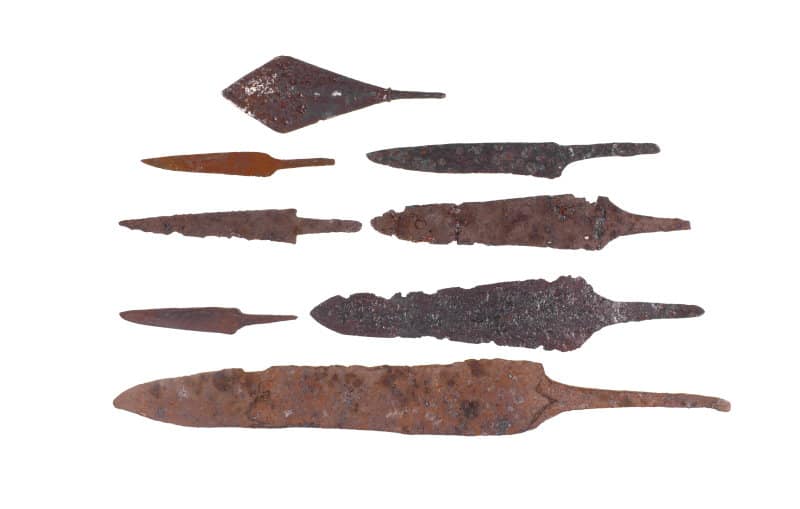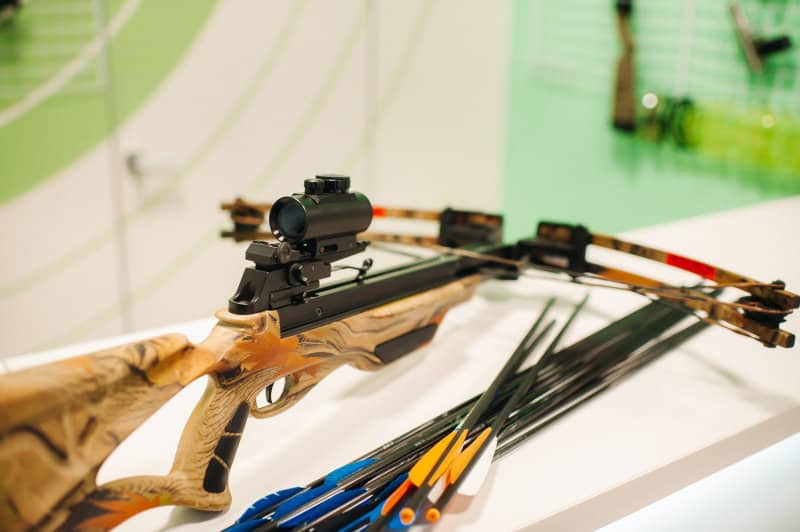It only takes one look at those ancient Egyptian wall carvings to figure out that archery is one of the world’s oldest sports. At the time of those carvings, archery wasn’t a sport. However, that doesn’t deny the fact that archery is very much a skill that predates all modern religions.
So, when exactly was archery invented?
Archery was invented as far back as 15,000 B.C, when soldiers first used it in the Paleolithic period. It could’ve been present before that, but that’s as far as the discovered markings go. A lot of discoveries also trace back to 3000 B.C, when the Ancient Egyptians used archery for hunting.
Step into a time machine with me, and allow me to throw some facts your way about this ancient but still very much popular sport!
This Is When Archery Was Invented

First, let’s layout facts: almost all countries worldwide (except for Australia) utilized archery as a form of weaponry at some point. Before guns were invented, bows where the soldiers’ go-to weapon.
The origin of archery can be traced back to 15,000 B.C. Specifically during the Paleolithic period, also known as the late stone age. Its origin is Stellmoor, in the Ahrensberg Valley, in modern-day Hamburg, Germany.
Ancient Egyptians and Nubians later used it for hunting and defending themselves during times of war at approximately 3000 B.C.
Its first-ever appearance in other ancient civilizations differs. It was first observed in China during the Shang dynasty between 1766-1027 B.C. Ancient scriptures uncovered then showed war chariots with three men, one of them serving as the archer.
The ancient archery festival called Jashn-e-Dafang is still celebrated in Shigar. A group of archers from Shigar valley, Gilgit Baltistan.
Circa 1920#GilgitBaltistan #History #HighAsia @odysseuslahori @alinashigri @Saherb1 @IfraJan_ pic.twitter.com/M8slnnetDx
— Araib Ali Baig (@The_North_Blood) July 2, 2020
We can confidently say that archery was invented as early as 15,000 B.C, although this is arguable by some scientists who claim it goes further back. However, markings found on archery only date as far back as 15,000 B.C. only. Anything further remains a subject of dispute.
Bows and Arrows Throughout History
If this isn’t your first rodeo when it comes to archery, then you probably don’t need further acquaintance with its basic structure. However, if you’re still a newbie, then let’s get down to business.

When one imagines an archery’s bow and arrow, their imagination doesn’t run wild. After all, their basic structure is well-known. However, they have been modified to fit with modernity and rising technology.
So let’s look at how bows and arrows have changed throughout history.
Ancient Bows and Arrows
The earliest versions of bows were constructed using wood, mostly made out of elm. These bows were commonly large, and they went by the name “longbows” and were increasingly popular in areas like the British Isles.
Depiction of the ancient archers of the Indus Valley!
These archers who employed long bows were a source of much distress and surprise for the invading Macedonian armies of Alexander.
Long bow archery is still alive in Pakistan amongst the Kalashas, Chitralis and Pashtuns. pic.twitter.com/PuNfepFmgd
— Huzaifa. (@MHuzaifaNizam) April 12, 2021
The ancients made the earliest versions of arrows out of bones; they were heavy and weren’t used with a bow. Instead, they were thrown by hands at the target. This was the prehistoric version of the arrows.
Composite Recurve Bows and Wooden Arrows
As the years went by, bows and arrows both witnessed transformation. With the rise of technology and advancement, it was only fitting that, like everything, bows and arrows would adapt to modernity as well.
The Bows
Composite recurve bows were the modernized version of the prehistoric bows. They were much more efficient since their structure allowed the arrow to be pulled all the way back, in contrast to self-bows and longbows that didn’t have that kind of flexibility.
People usually made composite recurve bows out of wood, and the strings were made out of animal intestines, specifically cattle like sheep.
Of course, each culture had its own unique design, and they used a variety of materials depending on the availability in the region in question. For instance, ancient Japanese people made their bows out of whalebone. At the same time, Eskimos made them using a mixture of wood and bone.
The Arrows
Like bows, arrows witnessed an evolution. While their primary structure has remained consistent, there were some modifications to it. Since they were a vital element in warfare, it was believed that back in the day, soldiers spent a lot of time in an attempt to make them more efficient.
Like bows, military men also made arrows out of pliable wood that was as strong as flexible. An arrow’s basic construction is composed of a sharp end, which is the tip, and the shaft made out of wood.
Arrowheads were the part of the arrow that had the most significant transformation. Materials used to make arrowheads varied between shells, bones, stones, and metal. Those arrowheads were then attached to the shaft.
The ancient folks used strings made out of sinew and animal hide to attach the arrowheads to the shaft. Modern ones are attached using cement, socket, or even both.
Another essential element that makes modern arrows more advanced than ancient ones is the addition of feathers. These were placed at the other end of the arrow.
Arrows come in a variety of shapes. Both longer and shorter arrows are used. Even though they’re both used equally, each length has its own pros and cons.
Crossbows, Compound Bows, and Beyond

With the evolution and technology, the bow and arrow transformed and somehow birthed other weaponry similar in structure and spirit to the ancient ones.
Compound bows are considered the most powerful and accurate bows ever created in our modern times. They have many characteristics and advantages over the ancient or traditional bows that we have been talking about throughout the article.
What makes the compound bow different from a traditional bow is that it provides the user with a system or a mechanical advantage. This allows any person to be able to shoot arrows with extremely great accuracy and power without relying on physical strength.
Compound bows also have different structures than traditional bows. See, the compound bows have extra strings, cables, and cams. These cams are found at the end of the limbs and are the ones that provide the structure and allow the user to pull back the strings with minimal strength.
This, in a nutshell, is what makes a compound bow much more special and much more efficient than the traditional bow.
The Takeaway
So to conclude, we can now clearly state that archery dates back to the paleolithic period of the late stone age.
The ancient sport of archery has been preserved for over 15,000 to 10,000 years. It’s a miracle that it has survived the test of time, and it witnessed evolution and advancement throughout the years. It’s now so recognizable that it’s a beloved Olympic sport.
Who knew that those archers back in the Paleolithic period would be practicing a form of sport that would still be extremely popular to this day!
If you’re still a newbie to the sport and wish to be acquainted more with it, or you’re curious about some of the equipment you might need to get started, you can start here with the basics.

